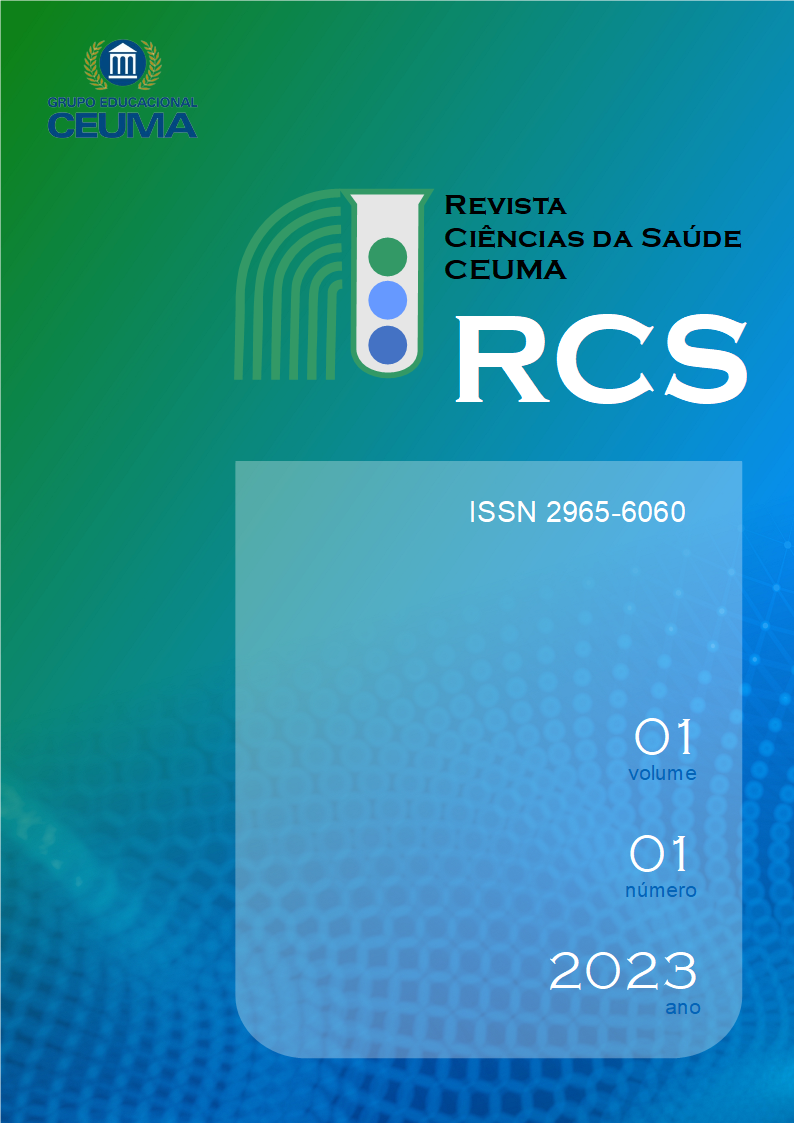Functional evaluation through mobile technologies
reliability and minimally clinically important difference
DOI:
https://doi.org/10.61695/rcs.v1i1.5Keywords:
Gait analysis, Mobile applications, Data accuracy, Low-cost technologyAbstract
Introduction: The advancement of mobile technologies offers clinical and scientific opportunities to extrapolate the controlled environment of a movement laboratory. However, applying a technology in the clinical and scientific environment minimally requires a validation screen. Objective: To analyze intra and inter-rater reliability and the minimum value of clinical change detectable by a gait assessment mobile application. Materials and Methods: Cross-sectional observational study carried out with young women. The gait evaluation was performed using a smartphone that contained at least the sensors: accelerometer, magnetometer and gyroscope. Being performed by the Balanced Gait Test application. With the smartphone fixed above the anterosuperior iliac crests, just over the umbilical scar, the patients were instructed to walk on a straight track of 30 meters at a self-selected speed. The application has been configured to capture a minimum of 20 cycles per member. The reliability analysis included 3 evaluations by a single evaluator and one evaluation by 3 experienced evaluators, thus calculating the intra and inter evaluator ICC using the IBM SPSS Statistics version 23.0 software. Finally, the minimum detectable clinical alteration values for variable face (MDC) were calculated. Results: Thirty healthy women aged 26.2 years ±6.76 and BMI 22.68 kg/m² ±2.09 were evaluated during the study. The respective variables showed high intra and inter-rater reliability (ICC>0.80, p <0.05), namely: cadence; symmetry of stance and swing time; symmetry of vertical, transverse, and frontal acceleration in stance and swing. The MDC of the highlighted variables ranged from 4.1 to 10.7 of the total score. Conclusion: It is concluded that for the highlighted variables, the application presents considerable indication due to its high reliability, and minimum values of detectable clinical alteration found.
Downloads
References
Batista L et al. Avaliação da amplitude articular do joelho: correlação entre as medidas realizadas com o goniômetro universal e no dinamômetro isocinético. Revista Brasileira de Fisioterapia. 2006;10(2). https://doi.org/10.1590/S1413-35552006000200009
Bucke J et al. Clinical assessment of thoracic axial rotation: A criterion-related validity study of a digital inclinometer and iPhone. Manual Therapy. 2016;25:e84. https://doi.org/10.1016/j.math.2016.05.140
Charlton PC et al. Reliability and concurrent validity of a Smartphone, bubble inclinometer and motion analysis system for measurement of hip joint range of motion. Journal of Science and Medicine in Sport. 2015;18(3):262–267. https://doi.org/10.1016/j.jsams.2014.04.008
Dos Santos RA. et al. Evaluation of knee range of motion: Correlation between measurements using a universal goniometer and a smartphone goniometric application. Journal of Bodywork and Movement Therapies. 2017;21(3): 699–703. https://doi.org/10.1016/j.jbmt.2016.11.008
Gadotti I, Vieira E, Magee D. Importance and clarification of measurement properties in rehabilitation. Revista Brasileira de Fisioterapia. 2006;10(2):137–146. https://doi.org/10.1590/S1413-35552006000200002
Guidetti L, Placentino U, Baldari C. Reliability and Criterion Validity of the Smartphone Inclinometer Application to Quantify Cervical Spine Mobility. Clinical Spine Surgery: A Spine Publication. 2017;30(10): E1359–E1366. https://doi.org/10.1097/BSD.0000000000000364
Jenny JY. Measurement of the Knee Flexion Angle With a Smartphone-Application is Precise and Accurate. The Journal of Arthroplasty. 2013;28(5):784–787. https://doi.org/10.1016/j.arth.2012.11.013
Kottner J et al. Guidelines for Reporting Reliability and Agreement Studies (GRRAS) were proposed. International Journal of Nursing Studies. 2011;48(6):661–671. https://doi.org/10.1016/j.ijnurstu.2011.01.016
Mannion AF et al. Range of global motion of the cervical spine: intraindividual reliability and the influence of measurement device. European Spine Journal. 2000;9(5):379–385. https://doi.org/10.1007/s005860000187
Milani P et al. Mobile Smartphone Applications for Body Position Measurement in Rehabilitation: A Review of Goniometric Tools. PM&R. 2014;6(11):1038–1043. https://doi.org/10.1016/j.pmrj.2014.05.003
Ockendon M, Gilbert R. Validation of a Novel Smartphone Accelerometer-Based Knee Goniometer. Journal of Knee Surgery. 2012;25(04):341–346. https://doi.org/10.1055/s-0031-1299669
Otter SJ et al. The reliability of a smartphone goniometer application compared with a traditional goniometer for measuring first metatarsophalangeal joint dorsiflexion. Journal of Foot and Ankle Research. 2015;8(1):30. https://doi.org/10.1186/s13047-015-0088-3
Pourahmadi MR et al. A new iPhone application for measuring active craniocervical range of motion in patients with non-specific neck pain: a reliability and validity study. The Spine Journal. 2018;18(3):447–457. https://doi.org/10.1016/j.spinee.2017.08.229
Quek J et al. Validity and intra-rater reliability of an Android phone application to measure cervical range-of-motion. Journal of NeuroEngineering and Rehabilitation. 2014;11(1):65. https://doi.org/10.1186/1743-0003-11-65
Tousignant-Laflamme Y et al. Reliability and criterion validity of two applications of the iPhoneTM to measure cervical range of motion in healthy participants. Journal of NeuroEngineering and Rehabilitation. 2013;10(1):69. https://doi.org/10.1186/1743-0003-10-69
Downloads
Published
How to Cite
Issue
Section
License
Copyright (c) 2023 Arthur Dutra Bomfim, Andrea Franco Amoras Magalhães, Guilherme Augusto Santos Bueno

This work is licensed under a Creative Commons Attribution 4.0 International License.

